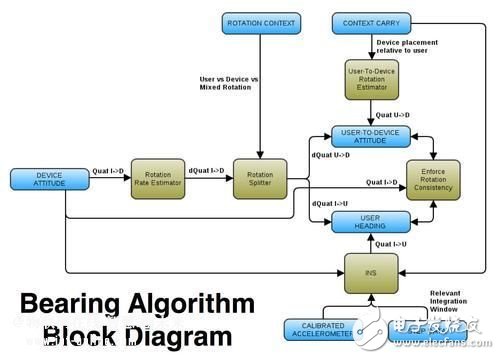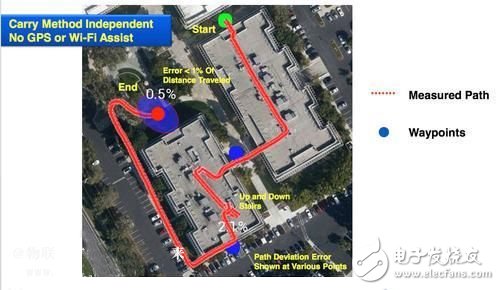Sensor Platforms' PDR system uses 10-axis sensor fusion analysis to calculate data from MEMS sensors (including accelerometers, gyroscopes, magnetometers, and barometric sensors) and read out the last known waypoint via the GPS chip. The distance the user moves and the location in which they are located.
Just as car navigation systems have revolutionized the way street addresses are searched, the goal of pedestrian navigation systems is to find breakthrough changes in indoor positioning applications.
In order to achieve a more complete range of pedestrian navigation applications, California's Sensor Platforms added the Pedestrian Dead Reckoning (PDR) technology to its FreeMoTIon Library software library.
In addition, by calibrating the context architecture of the user, Sensor Platforms claims that its PDR solution provides greater accuracy.

“The way Sensor Platforms takes is to use the sensor fusion to determine the user's situational architecture and apply it to achieve more accurate pedestrian dead reckoning, rather than directly using sensor fusion for pedestrian dead reckoning,†Sensor Platforms Business Development Vice President Frank Shemansky said, "Our software uses machine learning algorithms to determine if you are sitting, standing, or walking or running -- and really provides enough data to determine the contextual architecture of any user. â€
Other indoor navigation systems typically use a Wi-Fi router or RF signal to triangulate with an RF receiver, but the dead reckoning system calculates its position and direction by tracking the distance the user moves from the last known waypoint.
In addition to the general situation, some customers require Sensor Platform to develop more custom scenarios for their specific devices and applications, such as swimming, cycling and basketball. It is done by developing a specific sensor-data signal sign-off for a situational architecture and using the effects of accelerometer data and other sensors to make situation detection more accurate. Shemansky said that once a certain steady state (such as sitting) signal is signed, it usually takes only five seconds, and the algorithm can detect that the user has switched to another stable state (such as standing).
This context-aware approach can also assess how a user carries a smartphone or a device—such as a phone that is placed in front of, behind, or in a pocket. According to Sensor Platforms, if the phone is changed from vertical to horizontal without context detection, it may be misinterpreted as a 90-degree change. By adding context awareness to the sensor hub, a constant direction is maintained regardless of how the phone or device rotates.

Sensor Plaforms' PDR solution is designed for any mobile device and automates sensor calibration and magnetic anomaly compensation routines via the FreeMoTIon Fusion software library implemented in the background.
Double Socket Extension,Stainless Steel Wall Sockets,Gang Socket Extension,Zebronics Power Extension Socket
Heikki Technology Co., Ltd. , https://www.heikkipower.com